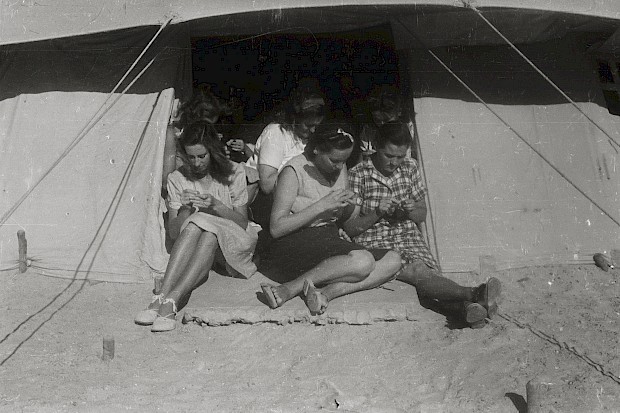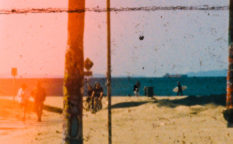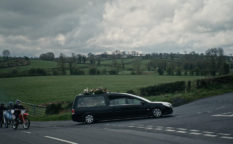El Shatt: A Blueprint for Utopia (2023)

We have been witnesses of ships carrying refugees across the Mediterranean for more than a decade. However, a similar sight was also common some 70 years earlier, towards the end of World War II, but the difference that ships were carrying people in a different direction, from Europe to Africa and Middle East. One of the places that accepted refugees was the El Shatt camp in the Sinai region of Egypt in which some 30.000 people (mostly from Dalmatian coast and islands) found shelter, while the Yugoslav partisans led by the communist party practised governing the state before they liberated the homeland.
The topic of El Shatt refugee camp that operated for more than two years is a part of the collective historical memory and family stories that have spread from Dalmatia to other parts of Yugoslavia, but they are not part of the public discourse, despite of a couple of official initiatives, newspaper articles and TV documentaries to preserve the memory. However, Ivan Ramljak’s feature-length documentary El Shatt: A Blueprint for Utopia that has just premiered at the Mediterranean Film Festival Split is the first work of the scope and artistic value equal to the historical one.
Ramljak opens and closes his documentary with a newly filmed footage of what is preserved of El Shatt: the memorial graveyard located on the bank of Suez Canal, dominated by the statue of Our Lady of Pain. After the opening scene, he introduces actors dressed in clothes common in the 1940’s rural Dalmatia, complete with the “Titovka” partisan hat adorned with a red five-point star. The actors are playing newspaper readers who put the stories from the individual memories in a wider context of World War II in Yugoslavia and Europe. That performative intervention also serves to divide the film into three dramaturgical acts.
The rest of the film follows the stories of the survivors who spent their childhood or youth on the camp. The order is pretty chronological. The exodus started with the order by the Partisan army that women, children, elderly people and men incapable of taking part in combat should leave their homes and first take shelter on the island of Vis which was under the control of the Allies and where the Partisan headquarters was located. Since the small island could not accommodate such a large number of people (50.000 as opposed to 10.000 before the war), the evacuation was ordered, first to Italy and from there to Egypt, and it was done by the Italian and British ships. From then on, the story follows the establishment of the camp (actually, a cluster of three camps each 10 km apart), the life there, education, the political, cultural and even religious activities, dealing with the harsh weather and epidemics, as well as the interaction with other refugee camps in the area and with local inhabitants.
Ramljak trusts his narrators and subjects completely and lets them tell their stories that might be a bit simplified and a product of fond, slightly distorted memories, and in that way he justifies the second part of the title. People there, especially young ones, were firm believers in the idea of communism, and the director lets them speak their mind and even tell their stories when they manifest their biases.
To do so, he uses a lot of exquisite archival photo and filmed material and employs the techniques we already saw in his previous works, from his short Islands of Forgotten Cinemas (2016), mid-length Home of the Resistance (2018) and his feature-length debut Once Upon a Youth (2020). Boris Poljak’s cinematography suits the film well, and the editor Jelena Maksimović welds all together in her usual meditative manner. The unsung hero here should be the sound designer Vladimir Živković whose work not only follows and illustrates the story, but adds one more layer to the footage.
Actually, the performative moments are the only questionable thing in the film. Although well done with their clear function to divide the acts, the structure should also be clear through the various lengths of the blacked-out screen in the editing, and their style, although it mimics the tone of the newscasts back in time, it is way too different from the rest of the material in the film. But nevertheless, El Shatt: A Blueprint for Utopia is a good documentary and a valuable testament of a historical period, the people’s memories and the stories they tell.
Original title: El Shatt – Nacrt za utopiju
Runtime: 96’
Countries: Croatia, Serbia
Languages: Croatian, Arabic
Directed by: Ivan Ramljak
Written by: Ivan Ramljak
Cinematography by: Boris Poljak
Editing by: Jelena Maksimović
Sound design by: Vladimir Živković
Sound editor: Miloš Drndarević
Sound recording by: Sunčica Ana Veldić, Hrvoje Radnić
Costume design by: Nevena Čaklović
Make-up by: Dolores Žanko
Colourists: Marko Milovanović, Boris Cvjetanović
Assistant director: Lukša Benić, Mina Hany AbdelMalek
Produced by: Tibor Keser
Co-produced by: Sunčica Fradelić, Mladen Kovačević, Iva Plemić Divjak
Production companies: Kompot, Kino Klub Split, Horopter filmska produkcija
Supported by: Croatian Audiovisual Centre (HAVC), Film Centre Serbia, Republic of Serbia – Ministry of Culture and Media
Sales by: Split Screen

















2023-08-12 @ 20:15
I was able to watch this film on Silba a few nights ago, and it was subtitled in English. I would like to share this film with friends who don’t speak
Croatian. Is there a trailer that is subtitled, and if I were to purchase the film, are subtitles available?
2023-08-12 @ 21:23
I am not sure if the film is already up on the internet since it’s doing its festival round.
2023-10-11 @ 01:01
Would I be able to watch this film. I live in California, USA. My mother was in the camp and I would really love to see this film.
2023-10-17 @ 23:16
It is really worth watching.
2024-08-17 @ 21:11
My late husband was born on Vis (1943) then transported to El Shatt for 2 years. I would love to view some movies & documentaries on this camp. with our grandchildren. English preferably.
Thank you
2024-08-21 @ 11:47
Dear Barb,
we are not a streaming platform, and we do not provide people with links to films for a simple reason that it is not part of our job Moreover, we watch films on big screen at film festivals. Ubiquarian is a platform dedicated to film criticism. I am sorry that I couldn’t help.
Marina